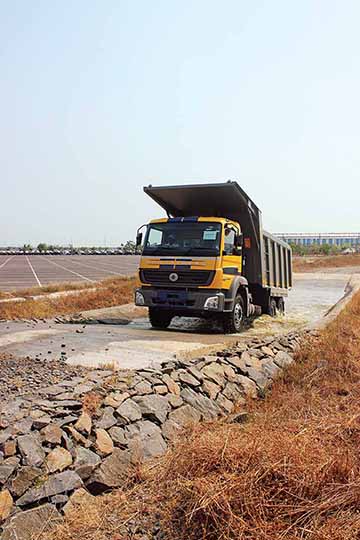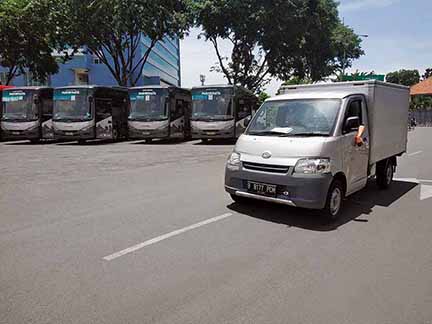The Indian CV industry has started the 2019-20 financial year with a bang. Describing the start of the new fiscal as promising, Girish Wagh, President – Commercial Vehicles Business Unit, Tata Motors, expressed that their FY2018-19 cumulative sales registered a growth of 17 per cent. It were the highest (with the sales of 468,692 units) since 2012-13. Wagh attributed the sales growth to tippers, which grew 12 per cent in March and ended the year with robust growth of 53 per cent on the back of the infrastructure growth momentum in the country. SCV and pickup sales grew 11 per cent in March 2019, and 24 per cent for the year on the back of the growing e-commerce sector, rural growth and Swachch Bharat initiatives, according to Wagh. With the launch of electric buses across the country and the beginning of the school season, Tata Motors witnessed its commercial passenger carrier segment grow two-per cent in March. In the last fiscal, the segment grew by four-per cent. If the journey of Tata Motors through the last fiscal, and into the current fiscal reflects the health of the CV industry, and in-turn of the economy, the situation globally is reaching an interesting stage. With the US imposing higher tariffs on Chinese imports and China retaliating in kind, global gross domestic product (GDP) growth is anticipated to slow down from 3.7 per cent in 2018 to 3.2 per cent or lower in 2019, depending on trade war scenario conditions.

The US avoided increasing tariffs on US $200 billion worth of Chinese imports from 10 to 25 per cent on March 1, 2019. In view of this, it remains to be seen if a US-China trade deal can be struck. According to Frost & Sullivan’s Emerging Market Innovation Group analyst, even if brokered, it is possible that the removal of US tariffs on Chinese imports will take place gradually over the years. “US-China trade wars are negatively impacting export-reliant economies such as Germany and Japan,” he said. “There are other indirect trade war effects that can be anticipated, such as weaker global crude oil demand and downside pressures on Asian economies that supply raw materials and components to China,” he added. With India in the election mode, a certain downslide in domestic consumption is expected over a short-term. With CV industry leaders like Wagh anticipating a rise in demand for CVs after the elections are over would reflect on the return of inherent domestic demand as the new government goes about its work at the Centre. From a global economy point of view, India would stand much to gain. According to Frost & Sullivan’s recent analysis, ‘Global Trade Wars Impact, Forecast to 2020’, the impact of trade wars would prove beneficial to Southeast Asia. Said an analyst that Southeast Asia appears to have emerged as a winner in this context, with businesses increasingly looking at moving production outside of China.
In terms of impact per industry, the automotive sector came under pressure in 2018 on account of additional tariffs imposed by China and the US on each other’s automotive imports, as well as higher US tariffs on steel and aluminum imports. The threat of as much as 25 per cent US tariffs on car and parts imports from the rest of the world continues, and will likely result in companies that specialise in industrial robots and automation to see a strong rise in demand. As the auto industry looks at efficient and environmentally friendly ways of manufacturing, companies that specialise in processes and operations would stand to gain the most. They will gain as businesses look to cut production costs and offset import tariff hikes. Interestingly, industries like warehousing also will gain from greater stockpiling in anticipation of new tariffs. According to the Frost & Sullivan analyst, the four trade war scenarios for 2019 are likely to be the continuation of trade wars, partial tariff removal, intensification of trade wars and conclusion of trade wars. The conclusion at this moment is quite unlikely. It will, however, have to be arrived at, and would therefore eventually come.
Back to the Indian market, and a newly-released TransUnion CIBIL CYQ4 2018 Industry Insights Report (IIR) shows that the Indian consumer credit market is continuing to expand on the back of strong growth in the major unsecured lending categories of credit cards, personal loans, and consumer durable loans. Secured lending categories—loans against property (LAP), auto loans and home loans—experienced more moderate total balance growth, by comparison, expanding at the still-robust levels of 21.8 per cent, 17.4 per cent and 17.1 per cent respectively over the fourth quarter of 2018 calendar year. These growth levels indicate that credit demand by Indian consumers remains strong. Said Yogendra Singh, Vice President of data science and analytics for TransUnion CIBIL, “Consumer credit continues to be a key driver for the Indian economy. Although GDP growth has decelerated in recent quarters, the rate of overall consumer lending growth in India is still significantly higher than for most other major economies in the world.”
Reflective of a transformation of the consumer mindset from a savings-focused and debt-averse country to a more consumption-focused, leveraged economy, the changing demographics, increasing urbanisation, rising digitalisation and the subsequent rise of e-commerce is cited as some of the reasons for improved retail lending access and increased exports. There’s been a specific increase in the proportion of short-term, smaller-sized loans, often passed by Non-Banking Financial Company (NBFC) lenders. Risking funding headwinds, NBFCs, which have been a significant part of overall consumer lending growth in recent years, could lose out to the slowing global economy. There are early signs that this sector is beginning to cool down. Banks could have an opportunity to step in and capture a greater share of the market. With the inherent domestic demand expected to rise in the medium-term, market shifts are expected to continue. As lenders continue to adapt, consumers will profit from an ability to leverage. With lighter CVs, some bus segments and tippers continuing to do well, an uptick in the lending environment would see transporters secure funds on better conditions. As consumers, they would stand to gain. They would get to aim higher. And, this would in-turn translate into a better ability for the CV industry to tide over the many challenges it is facing.



























